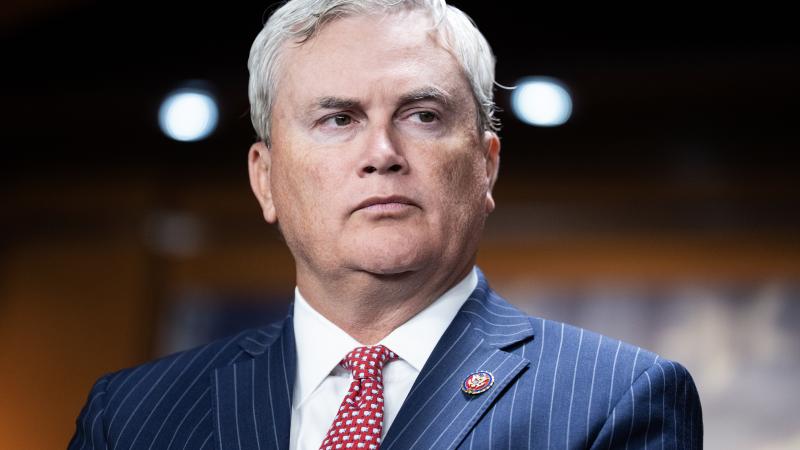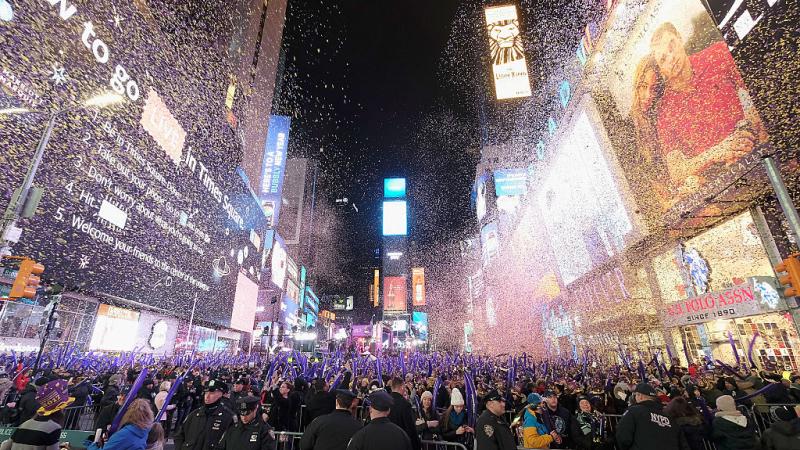Liz Cheney's J6 attack on Trump undercut by her father's own actions during 1992 LA riots
Presidents authorize Guard use but typically wait for requests from local officials, just like then-Defense Secretary Dick Cheney did during 1992 Rodney King riots.
Long estranged from the 45th president, Republican Rep. Liz Cheney tried recently to make hay against Donald Trump by suggesting he never ordered National Guard troops to the Capitol during the Jan. 6 riots. But her attack misconstrues Pentagon procedures and is undercut by her own father's actions as defense secretary during the 1992 Rodney King riots.
In modern history, the Defense Department has interpreted its obligations under the Posse Comitatus Act passed in 1878 to mean that National Guard troops can't be ordered into action for civil unrest in American localities unless they are requested by local authorities, such as a mayor, police chief or governor, according to a historical analysis of the Pentagon's compliance with the law.
The practice is for a president to authorize his defense secretary to deploy troops in times of crisis upon receipt of a request and then let the Pentagon order deployment once that plea for help is made
That's what Trump did in the days before the Jan. 6 riot, and what President George H.W. Bush and then-Defense Secretary Dick Cheney did during the violence that exploded in Los Angeles in the spring of 1992 after a jury acquitted police officers in the attack on Rodney King, according to the 2018 historical review from the Combat Studies Institute at Fort Leavenworth. That study acknowledged there remains much ambiguity about how the law applies to federal troop deployments on U.S. soil.
Cheney's authorization for troops to be ready in 1992 came only after a request first came from California Gov. Pete Wilson and Los Angeles Mayor Tom Bradley and after Bush authorized but did not order their deployment, the 2018 analysis stated.
Bush's instructions stated: "The Secretary of Defense is authorized to use such of the Armed Forces as may be necessary to carry out the provisions of section 1. To that end, he is authorized to call into the active military service of the United States units or members of the National Guard, as authorized by law, to serve in an active duty status for an indefinite period and until relieved by appropriate orders. Units or members may be relieved subject to recall at the discretion of the Secretary of Defense."
The military history of that event shows that Cheney, as defense secretary, then acted to place 4,000 troops on alert.
"Governor Wilson and Mayor Bradley were talking directly with President George H.W. Bush and General Colin Powell," the military history stated. "By late evening on 30 April, Secretary of Defense Richard B. Cheney ordered the Secretary of the Army to place 4,000 soldiers on alert. Active Duty troops alerted for possible deployment to Los Angeles included 2,500 soldiers from the 7th Infantry Division (Light) at Fort Ord, California, and 1,500 Marines from Camp Pendleton, California."
You can read that historical military analysis here.
The requirements of the Posse Comitatus Act, while followed in 1992, nonetheless led to complaints that the Bush administration was slow to react, the paper said.
"PCA created controversy during and following the 1992 Los Angeles riots, possibly slowing efforts to quell the uprising and permitting the violence to escalate and spread," it noted.
Documents show the Trump administration followed a similar approach in the lead-up to the Jan. 6, 2021 Capital riot. The Trump Pentagon offered National Guard assistance to the Capitol Police four days ahead of the event, according to the Capitol Police's official timeline of events.
The Defense Department contacted the Capitol Police on Jan. 2, 2021 to "determine whether USCP is considering a request for National Guard soldiers for January 6, 2021 event," the timeline states. The next day, Capitol Police Deputy Chief Sean Gallagher replied that a "request for National Guard support is not forthcoming at this time after consultation with" Police Chief Steve Sund, the timeline added.
On Jan. 3, 2021, Trump met with senior aides at the White House, including acting Defense Secretary Chris Miller and Joint Chiefs of Staff Chairman Gen. Mark Milley and urged them to use whatever National Guard troops were needed to ensure there was no violence at the event.
"The president told Mr. Miller that there would be a large number of protesters on January 6, 2021, and Mr. Miller should ensure sufficient National Guard or soldiers would be there to make sure it was a safe event," the Pentagon inspector general reported last year.
Former DOD Chief of Staff Kash Patel told Just the News that at that meeting Trump said he was authorizing up to 20,000 troops that could be deployed or readied if needed.
On Jan. 4, 2021, Miller consulted with local Washington, D.C. officials, and signed an authorization for the Army Secretary that approved 340 unarmed D.C. National Guardsmen to be ready for action, and giving the Army chief permission in advance to deploy a quick reaction force as a "last resort" without having to go back to Miller or Trump.
"The DCNG will be postured to support; however, will not commit until the request for support is approved," Miller wrote.
The Pentagon's chief watchdog, who reviewed the DOD's actions leading up to Jan. 6, concluded they were lawful and appropriate.
"We concluded that the actions the DoD took before January 6, 2021, to prepare for the planned protests in Washington, D.C., on January 5 and 6, 2021, were appropriate, supported by requirements, and consistent with the DoD's roles and responsibilities," the inspector general wrote in a report late last year.
"In particular, we determined that the decisions made by Mr. Miller, Mr. McCarthy, and other senior DoD officials, and actions taken by the DoD in response to the civil disturbance at the U.S. Capitol Campus on January 6, 2021, were reasonable in light of the circumstances that existed on that day and requests from D.C. officials and the USCP," the report added.
On Jan. 5, 2021, D.C. Mayor Muriel Bowser made clear she did not want any further National Guard troops sent to the Capitol.
"To be clear, the District of Columbia is not requesting other federal law enforcement personnel and discourages any additional deployment," Bowser wrote.
















